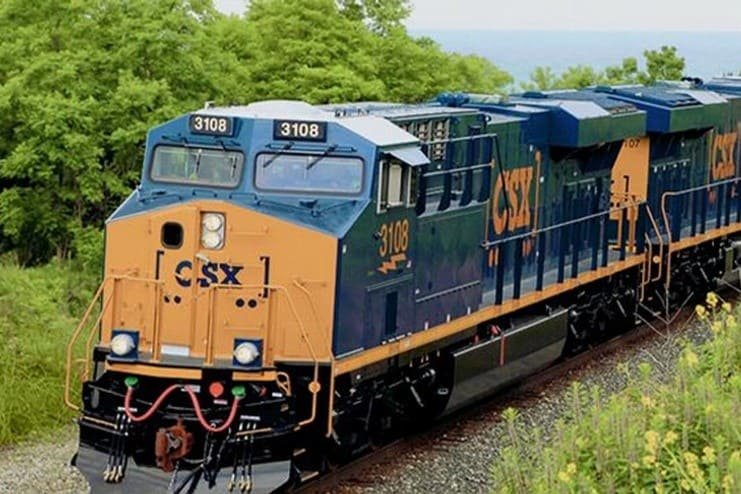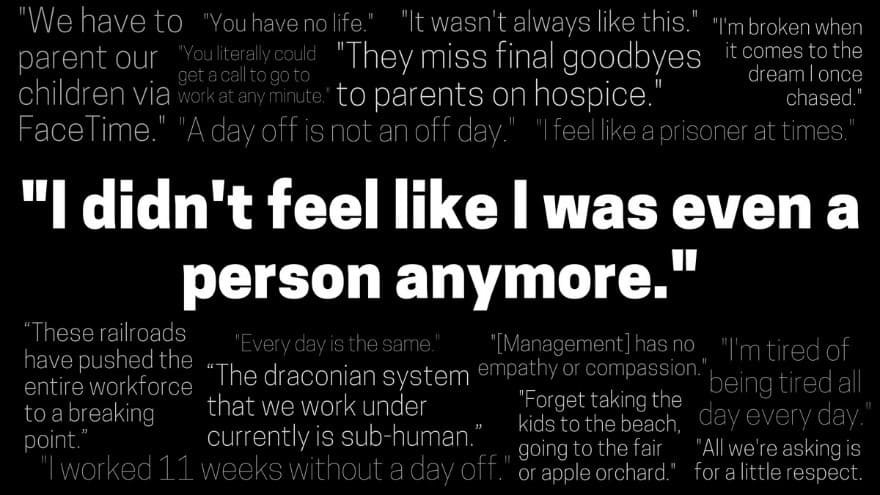Report by Kamgar Ekta Committee (KEC) correspondent

Nearly 115,000 U.S. rail workers had threatened to go on strike from 16th September 2022 if their demands for wage increase and change in attendance policies were not met. The President of USA had to intervene to avert the strike due to the severe impact of the strike on the American economy which is fearing recession.
The rail workers showed the power they have as their strike would have shut down 40% of long-distance trade by stopping movement of freight trains. The U.S. Chamber of Commerce warned that the strike would be a “national economic disaster”. Transportation by rail accounts for about 28% of freight transportation in the U.S., according to the Federal Railroad Administration.
As per the tentative agreement, the wage rise will be the biggest one rail workers have received in more than four decades. They will get 24% raises and $5,000 in bonuses. The agreement also includes an immediate 14.1% wage rise.
The agreement includes one additional paid leave day a year, and rail companies also agreed to let workers take unpaid time off for doctor’s appointments and medical procedures without being penalized under their attendance rules.
The unpaid time off is a key concession that addressed some of the unions’ concerns about working conditions. Under the current system at BNSF and Union Pacific, workers receive a set number of points, and they lose points any time they take time off. If workers use up all their points, they can be disciplined or even fired.
The agreement would be effective from 2020, once approved by members of various unions.
“The solidarity shown by our members, essential workers to this economy, who keep America’s freight trains moving, made the difference,” a union leader told.
A Presidential Emergency Board appointed in July had recommended an immediate 14% wage increase for workers and stronger benefits, but the unions said they would not accept any proposal that does not change the “brutal” attendance policies that currently force them to be “on call” 90% of the time.
Unions complained that staffing shortages and workplace attendance policies have created punishing schedules for staff. Workers say they are effectively on call throughout the year, with no paid time off in some cases even if they are unwell or have other personal emergencies.

Freight train operations in USA are owned by multiple private rail monopolies of some of the biggest capitalists of the country. They insist that the system is necessary to ensure sufficient manpower to operate and claim to have been hiring aggressively to ease the strain. On the other hand, the major rail companies have cut their workforce by 29% over the past six years.
More than one million Americans worked on the railroads in the 1950s, but the industry now employs fewer than 150,000 people.
Rail workers last went on strike in 1992. The walkout lasted two days before the Congress (US parliament) intervened.
The rail companies have been making huge profits in recent years; in 2021 alone they made a record-breaking profit of $20 billion. Further, the rail industry spent over $18 billion, not to improve rail safety, but to buy back its own shares and hand out huge dividends to its wealthy shareholders. In fact, since 2010, the rail industry has spent over $183 billion on share buybacks and dividends.
It is reported that private rail companies are one of the most profitable industries in US, with average margins of 50%. The rail segment of transportation has an average net margin—”profitability, after all expenses and taxes, accruing to stockholders in the firm”—of 28.9%.
BNSF Railway Company, owned by one of the biggest capitalists of U.S. and the world, Warren Buffett had revenue of $22.5 billion in 2021 and its Profits before taxes were $9.3 billion, or 41%. For another big rai company CSX Corp., the revenue in 2021 was $12.5 billion and profits before taxes was $5 billion, which is 40%. Compare that with the median value of profitability for all industries, which is 7.9%.
As of now there is no provision for paid sick leave, which is inhuman. It is estimated that providing rail workers with 15 days of paid sick leave would cost an estimated $688 million a year, which is less than 3.5% of the profit made by the industry.
The harsh working conditions of U.S. rail workers under private rail freight companies should strengthen the resolve of Indian rail workers to even more vigorously oppose the privatisation of Indian Railways. The government’s proposal to privatise the operation of goods trains on Dedicated Freight Corridors must be opposed and stopped!
